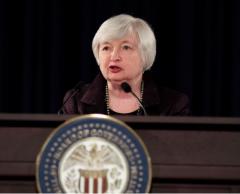The Federal Reserve announced that it will finally begin the process of reversing quantitative easing. Following the process it outlined earlier this year, the Fed will start allowing assets (Treasurys and mortgage-backed securities) to mature off its balance sheet, rather than re-investing them as had been its prior policy. The current plan is to start with a $10 billion roll off in October, and increasing quarterly until it reaches $50 billion by October of next year. Considering the Fed’s balance sheet currently stands $4.5 trillion, the Fed is envisioning a slow, multi-year process. As Philadelphia Fed president Patrick Harker described it earlier this year, the goal is for it to be “the policy equivalent of watching paint dry.â€
Of course the old saying about the “best-laid plans of mice and men†also applies to central planners, and as Janet Yellen once again noted today, “policy is not on a pre-set course.†Should markets react negatively, as they did when Bernanke hinted at reducing their purchases in 2013, the markets have reason to expect the Fed to act. In fact, when asked, Yellen kept the door open to both lowering interest rates and stalling its roll-off should market conditions worsen. In fact, it appears that markets are already betting on the Fed to not follow through on its projected December rate hike.
As the Fed has been signaling for months now that a taper was in the works, the mainstream narrative suggests that tapering has been priced in (though stocks dropped on the news.) There are still major questions left unanswered.
One of the biggest questions going forward is who will step up to replace the Fed’s purchasing power in the US Securities market? In the past, the US has been able to count on China to purchase US debt. Even before the Trump administration threatened the country with sanctions, China was selling off Treasurys in order to help prop up its struggling economy. With other nations also backing off from US debt, the hope is that investors will fill the gap. While the continued actions of the ECB, BOJ, and other central banks may make US debt more attractive in comparison, increased investments in bonds is likely to come at the expense of other assets.


